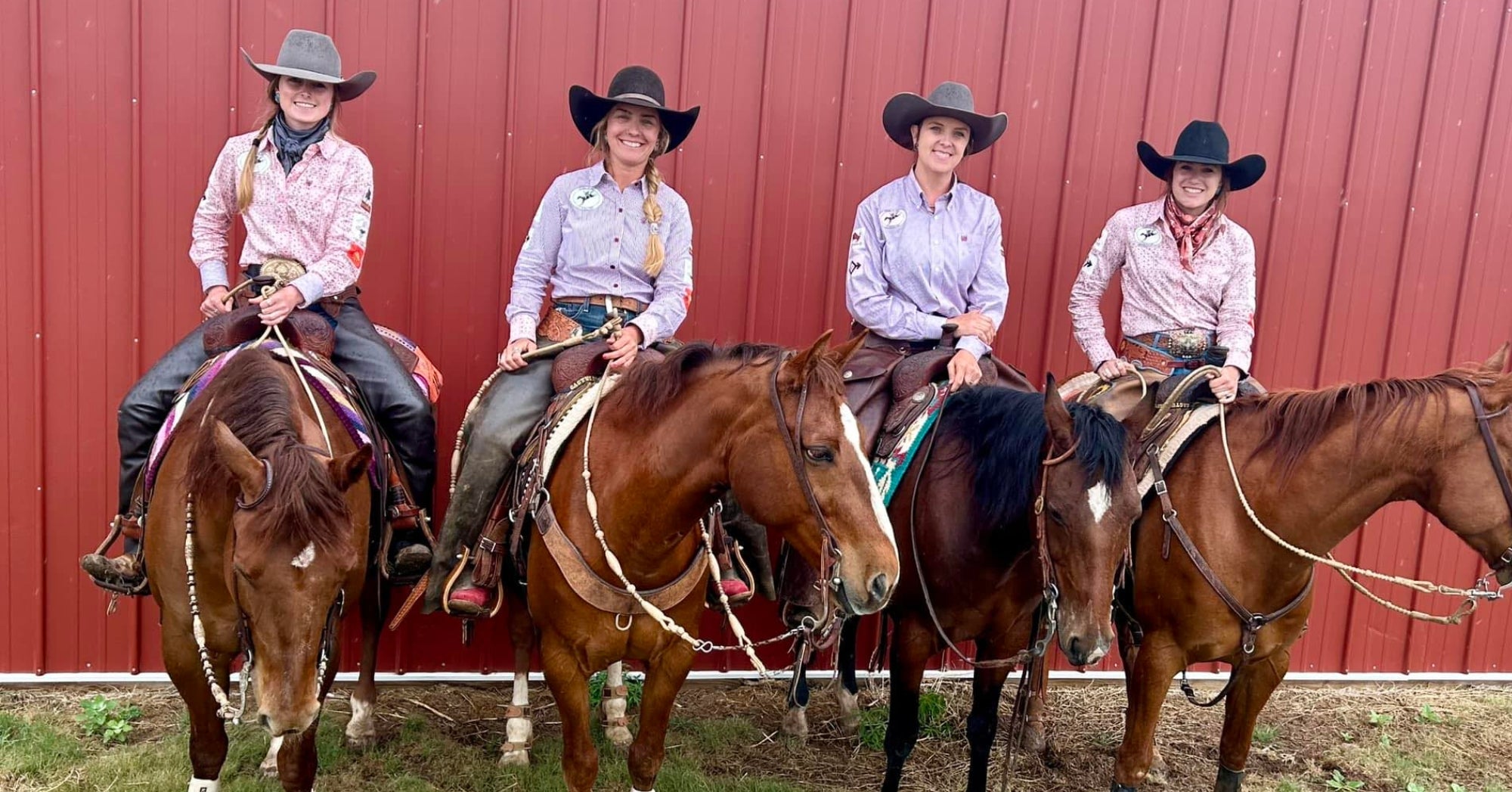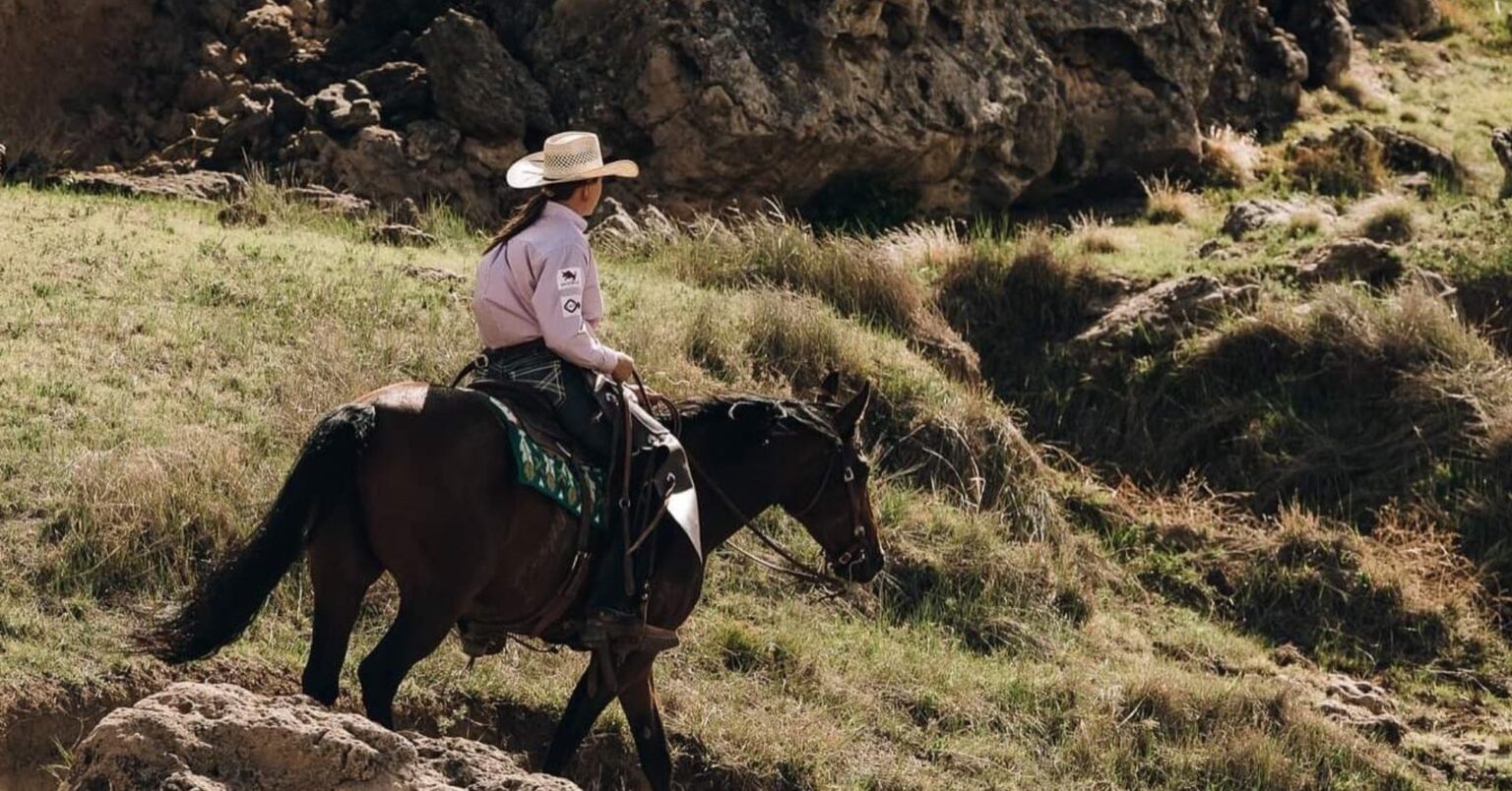By May, not just flowers start blooming all over the countryside — so do straw cowboy hats. Traditionally, the transition from felt to straw hats happens at Easter and lasts up to Labor Day, which coincides with rising temperatures and longer days. But as is typical with all things cowboy, practicality trumps tradition. Some swap out simply depending on the weather rather than the calendar.
For example, when I was a kid and riding in the wilderness in the summers, I discovered that felt hats may be warmer, but they also handle thunderstorms and hail considerably better than straw.
When you find yourself in a mountain rainstorm, a felt hat can keep your head dry and offer some insulation. Straw hats, on the other hand, are designed to be light and breezy — ideal for scorching heat on the plains or in the branding pen.
However, etiquette and seasonal decorum do matter, especially in Western society, where the apparel on your head says a lot about who you are and what you care about.
Cowboy hat etiquette 101
Wearing a cowboy hat is not just a function of shading the sun or completing a look — it’s a manifestation of respect, heritage, and identity. The National Ranching Heritage Center and the majority of those entrenched in Western culture agree on several unwritten (and sometimes written) rules that govern proper cowboy hat wear.

1. Be able to take it off
An authentic cowboy has manners: He removes his hat during the National Anthem, the Pledge of Allegiance, a funeral procession, or while in church or during prayer.
It’s also customary to tip or remove your hat also when saying hello for the first time, and upon entering a house, public building, or restaurant. If doubtful, apply the rule of thumb: No hats indoors.
2. Select the proper hat for the season
Straws during summer, felts during colder weather. This isn’t just a fashion dictate — it’s practical. Felt hats retain heat and repel moisture, which is ideal for cold, wet days. Straw keeps you cool and shields you from the sun when it’s merciless.
Yet if you’re attending a formal event or, perhaps, an indoor horse show, even during summer, a felt hat may still be the best option.
3. Show respect to your hat
Always grab a cowboy hat from the crown, never the brim, and never show the inside of your hat when you remove it — it’s impolite.
And under no circumstances place your hat on a bed! That’s one of the worst cowboy faux pas. Best-case, it’s said to invoke nasty bad luck or foretell an argument; worst-case, it’s a premonition of hurt or death.
The genesis of the superstition is ironically utilitarian: Back when bathing was a rare indulgence and head lice were rampant, placing a hat on on a bed was a great way to spread the bothersome itchiness around. It is taboo, too, to put a hat brim-side down on any surface — not only will your good luck “run out,” as the old-timers say — but it will also ruin the shape of your hat.
4. Don’t mess with someone else’s hat
A cowboy hat is personal. It’s not only rude, but it’s downright offensive, to touch a person’s hat without asking. Taking it off and trying it on or putting it back on can be considered an insult.
5. Respect superstition
Apart from the hat-on-the-bed taboo, there are some other superstitions that are alive and kicking in cowboy culture. Wearing your hat backwards, placing it on a chair, or wearing a new one while hunting or competing in rodeo can all be tempting fate. These superstitions may seem archaic, but they reflect a deep commitment to tradition, experience, and respect for risk.
Hat styles and what they say
Before the cowboy hat became a symbol, it began with function.
John B. Stetson, a famous hat manufacturer from Philadelphia, created the “Boss of the Plains” hat in 1865. By today’s standards, the design was rather plain, with a flat brim and smooth, rounded crown. Stetson crafted it from fine fur — beaver, rabbit, and other small animals — to make it tough enough for the elements. Thanks to its durability, the “Boss of the Plains” quickly became a favorite among working Westerners.
Over time, the cowboy hat evolved to reflect both regional styles and practical needs. The brim curved up to avoid interfering with a rope, and the crown was creased or pinched to offer a better grip. These changes weren’t just about fashion, they were about function, identity, and utility in the saddle.
There are many shapes of cowboy hats — each with a story. The most classic is the Cattleman crease, its three-part crown with a deep crease in the middle, and two indentations on the sides of the crown, it was developed to wear horseback.
The sloping brim and trail-worn sag of the Gus crease, immortalized by the miniseries Lonesome Dove, tells of sage wisdom.
There is also the Montana mix, with a more pronounced center crease and gentle sides, and the pinch front, which makes the face look thinner and has become a hit in both felt and straw varieties.
Of course, there are plenty more from flat brimmed buckaroo hats to cutters, quarter horses creases, and more. Every crease, every brim, every sweat stain tells something.
How are hats made?
Felt hats are produced through a unique process unrelated to woven goods. Instead of weaving strands together, felt is formed by matting animal hairs together using pressure, moisture, and heat in order to make a fabric water-resistant, firm, and lightweight.
Fur felt — made from the soft under-fur of animals like rabbits, hares, and beavers — is prized for its durability, flexibility, and shape retention. The process of making a fur felt hat is to make a cone of loose fur, shrink and shape it with hot water and pressure, block, and finish it meticulously.
Sweatbands, typically made from sheep or lamb leather or more recent foam alternatives, play a significant role in comfort and fit. Trimming and lining such details help make each hat usable and stylish-looking.
If you ever looked inside a cowboy hat and caught a glimpse of the “X” rating (10X, 50X, 100X or more), you’ve seen a system that marks the quality of the material that goes into the hat body. While there is no industry norm, the rating tends to reflect the fineness and the quantity of the material that goes into the body’s construction.
For felt hats, the X rating tends to indicate how much high-grade animal furs comprise the blend. These may be beaver, mink, chinchilla, and other small game animals. The greater the proportion of beaver fur in the blend — prized for its water resistance and durability — the higher the X rating. Hatmakers do not reveal the exact ratios, however.
On a straw hat, the rating by X indicates tightness of the weave and thickness of the reed. Increased X here signals a finer, tightly constructed body on the hat that is light in weight as well as highly durable and ready for a scorching long summer day sun.
So while the Xs themselves might not be consistent across brands, they’re still a fair overall indicator of quality and workmanship. And for hat wearers in general, they’re a source of pride.
What’s your style — and do you obey the calendar or the weather when you move into the season?
Heidi Crnkovic, is the Associate Editor for AGDAILY. She is a New Mexico native with deep-seated roots in the Southwest and a passion for all things agriculture.


